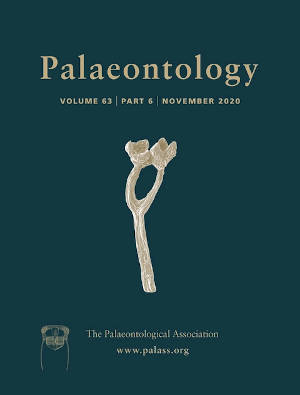Reg. Charity No. 1168330

The advent of palaeontological occurrence databases has allowed for detailed reconstruction and analyses of species richness through deep time. While a substantial literature has evolved ensuring that taxa are fairly counted within and between different time periods, how time itself is divided has received less attention. Stage‐level or equal‐interval age bins have frequently been used for regional and global studies in vertebrate palaeontology. However, when assessing diversity at a regional scale, these resolutions can prove inappropriate with the available data. Herein, we propose a new method of binning geological time for regional studies that intrinsically incorporates the chronostratigraphic heterogeneity of different rock formations to generate unique stratigraphic bins. We use this method to investigate the diversity dynamics of dinosaurs from the Late Cretaceous of the Western Interior of North America prior to the Cretaceous–Palaeogene mass extinction. Increased resolution through formation binning pinpoints the Maastrichtian diversity decline to between 68 and 66 Ma, coinciding with the retreat of the Western Interior Seaway. Diversity curves are shown to exhibit volatile patterns using different binning methods, supporting claims that heterogeneous biases in this time‐frame affect the pre‐extinction palaeobiological record. We also show that the apparent high endemicity of dinosaurs in the Campanian is a result of non‐contemporaneous geological units within large time bins. This study helps to illustrate the utility of high‐resolution, regional studies to supplement our understanding of factors governing global diversity in deep time and ultimately how geology is inherently tied to our understanding of past changes in species richness.
AcknowledgementsThis work greatly benefitted from discussions at the London vertebrate palaeobiology journal club, and we particularly thank Paul Barrett, Anjali Goswami (NHMUK), Philip Mannion (UCL), Thomas Halliday (University of Birmingham), Mark Sutton, Lewis Jones (Imperial College London) and Jason Head (Cambridge University) for their comments. We acknowledge Jon Tennant for contributions to an earlier version of this project. We would like to thank Neil Brocklehurst (University of Oxford) and David Fastovsky (University of Rhode Island) for their thorough peer review and helpful insights that greatly improved this manuscript, as well as editor Philip Mannion for additional help and comments. During the course of this work, SCRM was funded by an Imperial College Research Fellowship, CDD was funded by a UK Natural Environment Research Council studentship (1394514) as well as by the European Union's Horizon 2020 research and innovation programme under grant no. 637483 (ERC Starting Grant TERRA to Richard. J. Butler) during the completion of this project; AAC was funded by a Janet Watson Imperial College London Departmental PhD scholarship and a Centre of Excellence in Arctic Paleontology Postdoctoral Research Fellowship at the Perot Museum of Nature and Science. This is Paleobiology Database official publication number 366.